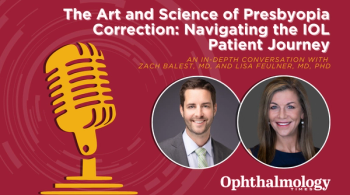
MVRF awards $1.2 million to retinal research grantees
The Macula Vision Research Foundation (MVRF) has announced its 2013-2014 grant recipients.
West Conshohocken, PA-The Macula Vision Research Foundation (MVRF) has announced its 2013-2014 grant recipients.
The national nonprofit organization, focused on funding research to find a cure for age-related macular degeneration and other retinal diseases, will provide the grantees $100,000 a year for 3 years to fund their basic research projects that are directly aligned with the mission of MVRF to find treatments and a cure for degenerative eye diseases.
"Some of the scientists we have funded have identified the gene for Leber congenital amaurosis, a disease which causes blindness in children," said Karen and Herb Lotman, founders of MVRF. "We are eager for our new grantees to follow the same path with their research and continue to carry out our mission to find a cure for these types of diseases."
The four grantees receiving funding are:
- Frans Cremers, PhD, a professor at Radboud University’s Nijmegen Medical Center, Netherlands, who will be using state-of-the-art technology to identify gene variants in seven different retinal degenerative diseases that have no known associated gene variants.
- Roxana Radu, MD, a researcher at the Jules Stein Eye Institute, UCLA, who will be researching the possibility of slowing retinal dysfunction, which often leads to macular degeneration, by expressing a specific type of protein in the eye.
- E. Strettoi, PhD, a senior investigator at the Italian National Research Council's Institute of Neuroscience, Pisa, Italy, who is conducting research on the sphingolipid pathway in the eye to identify the effects it has on retinal degeneration.
- Sally Temple, PhD, the scientific director and co-founder of the Regenerative Research Foundation’s Neural Stem Cell Institute, Rensselaer, NY, who will attempt to use human stem cells to generate fully functional human photoreceptors.
To date, MVRF has awarded $18.6 million in grants to fund visionary research and is committed to funding the best and brightest researchers in the world.
For more articles in this issue of Ophthalmology Times eReport,
Newsletter
Don’t miss out—get Ophthalmology Times updates on the latest clinical advancements and expert interviews, straight to your inbox.
















































.png)


